L-citrulline is a type of nonessential amino acid that's made in the gut from two other amino acids, arginine and glutamine.
L-citrulline benefits the body by boosting nitric oxide production, per a July 2018 review in Nutrients. Nitric oxide is a substance that helps regulate blood flow, which has protective effects on things like blood pressure and breathing. That's why nitric oxide may help prevent and treat both heart and lung disorders, per a June 2004 study in the American Heart Association's journal Circulation.
Video of the Day
Video of the Day
Nitric oxide can also support exercise performance by increasing the amount of oxygen and blood shuttled to the muscles, according to a January 2017 review in Current Opinion in Clinical Nutrition and Metabolic Care. That's why l-citrulline has shown promise as a natural way to lower blood pressure, improve blood flow and support muscle building and maintenance.
L-citrulline is made by your body, but it's also present in some foods. People can also take l-citrulline as a supplement, and doing so has become popular among athletes.
There is no set amount of l-citrulline that each person needs per day. Instead, people with particular health needs or susceptibility to conditions that may be supported by increased nitric oxide might benefit from eating more foods high in l-citrulline and/or taking l-citrulline supplements.
1. Red Watermelon
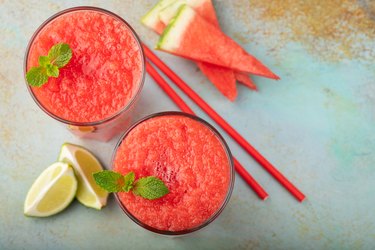
When it comes to fruits with the most citrulline, watermelon tops the charts. In fact, the name citrulline comes from "citrullus," which is the Latin word for watermelon, according to the National Library of Medicine.
The citrulline in watermelon has the potential to act as an antioxidant, according to a June 2005 study in the Journal of Chromatography. It also contains the natural antioxidant lycopene, which gives it its red color.
2. Yellow Watermelon
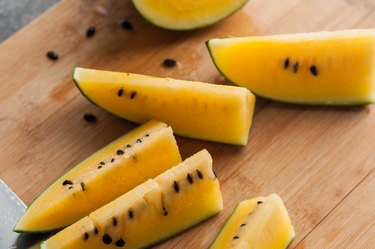
Though not as popular as red varieties, watermelon with yellow flesh is another fruit that's a good source of citrulline. Like other types of watermelon, it's rich in the antioxidant vitamin C and is very hydrating.
3. Casaba Melons

The casaba-type melon was found to a top source of citrulline, according to a March 2019 study in the Journal of Horticulturae. This type of melon belongs to a group that also includes honeydew, and may have similar nutritional benefits including providing fiber and small amounts of many vitamins and minerals, all with minimal calories and no fat, per the University of Florida.
4. Cucumbers
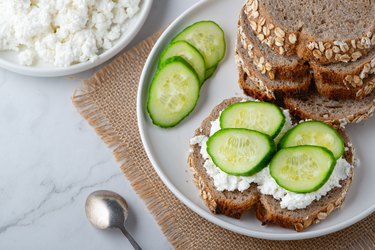
Cucumbers have citrulline because they're part of the same family as watermelon, called Cucurbitaceae. Like watermelon, cucumbers are very hydrating and have 97 percent water.
5. Cantaloupe
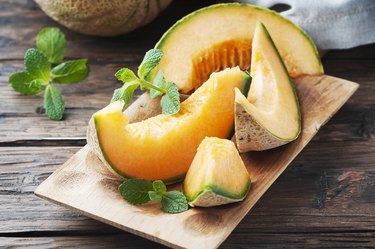
In addition to being sweet and juicy, cantaloupe is a good source of the mineral potassium, providing 10 percent of the daily value in 1 cup. Because potassium is also great for supporting blood pressure, the citrulline and potassium in cantaloupe may offer even greater heart-health benefits, according to the American Heart Association.
6. Mouse Melon

Also called Mexican sour cucumber, this small fruit is compared to a cross between a cucumber and a watermelon, and looks like a miniature striped watermelon, according to the Wisconsin Horticulture Division of Extension. It's a source of citrulline but may only be available in specialty markets or in other countries for purchase.
7. Horned Melon
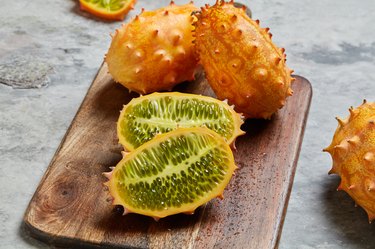
This type of melon has many names, including spiked melon and kiwano. It is another source of citrulline, but the content has been found to be higher in the rind compared to the flesh, which isn't edible, according to the March 2019 study in the Journal of Horticulturae.
8. Bitter Melon
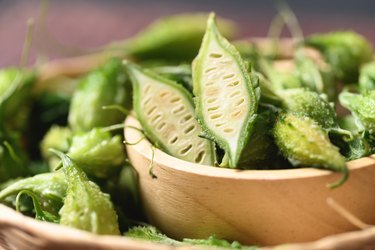
Bitter melon, also known as bitter gourd, is another type of melon that contains citrulline. The arils, or seeds, of bitter melon may contain more citrulline than the rind or flesh, according to the March 2019 study done by the Journal of Horticulturae, though these aren't as easily edible or desirable.
9. Pumpkin
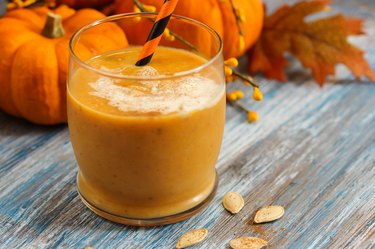
Though it doesn't contain as much as watermelon, pumpkin is another source of citrulline. The orange color is thanks to the plant compound beta-carotene, which is converted into vitamin A and also serves as an antioxidant, according to the Produce for Better Health Foundation.
Pumpkins are an excellent source of vitamin A, with 1 cup providing 55 percent of the daily value.
10. Summer Squash
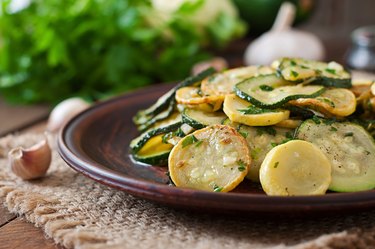
All squash are part of the Cucurbitaceae family and a source of citrulline, but we don't know the exact amount, and it may vary depending on the variety. Still, summer squash such as zucchini and yellow squash are nutritious vegetables that provide fiber along with many important vitamins and minerals.
- Nutrition: Citrulline: from metabolism to therapeutic use
- Nutrients: l-Citrulline Supplementation: Impact on Cardiometabolic Health
- Circulation: Inhaled Nitric Oxide
- Current Opinion in Clinical Nutrition and Metabolic Care: Influence of L-citrulline and watermelon supplementation on vascular function and exercise performance
- Fundamental and Clinical Pharmacology: Citrulline: pharmacological perspectives and its role as an emerging biomarker in future
- National Institutes of Health: Citrulline
- Journal of Chromatography: Determination of citrulline in watermelon rind
- Watermelon.org: Nutrition Facts and health Benefits of Watermelon
- Horticulturae: Citrulline and Arginine Content of Taxa of Cucurbitaceae
- University of Florida: Melon-Casaba
- Organic Facts: Top Honeydew Melon Benefits and Nutrition Facts
- American heart Association: How Potassium can Help Control Blood Pressure
- Wisconsin Horticulturae: Mouse Melon or Mexican Sour Cucumber, Melothria scabra
- Fruitsandveggies.org: Do Pumpkins Provide Beta-Carotene and Vitamin A?